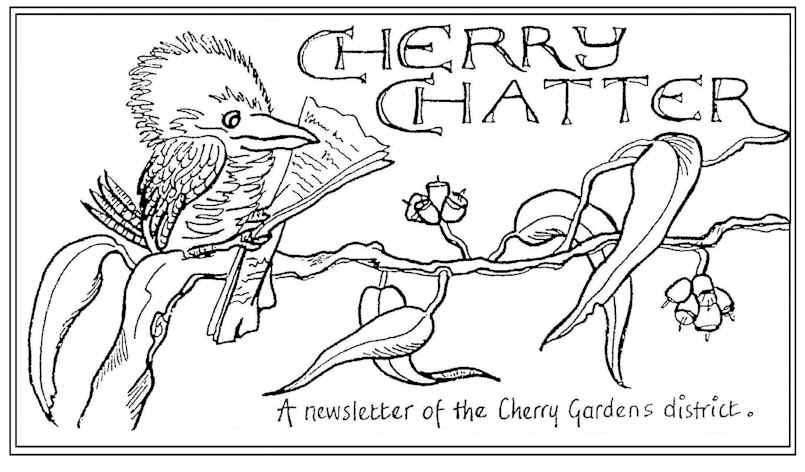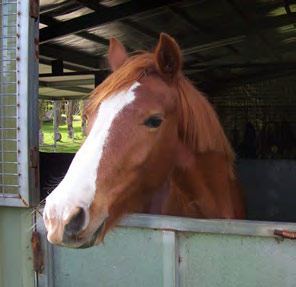Over the stable door
Greetings Fellow Equines and Horse Owners!
Hay
Summer is more or less on us now, so hope everyone has their hay organised for the coming twelve months. If you have sufficient, that is great, but spare a thought for those in the Eastern states who have struggled not just this year, but for the last few years. It certainly pays to plan ahead and have a good, reliable hay source. The price escalates enormously and never seems to go back down to the original!
The Saddle
Last month we looked at observing our horses’ comfort both in the paddock and under saddle. The saddle is not the only bit of gear that we put on our horses. Saddle cloths, lungeing rollers and other associated lungeing gear, work boots, floating boots, tail guards, bridles, earmuffs, the list goes on. Much gear which is bought off the rack, so to speak, does not always fit our horse. Ultimately, having something made to measure is the ideal, but that does not always fit the owner’s pocket!
Let’s look at the bridle
A basic bridle is made up of a head piece which goes over the top of the head and attaches to a cheek strap on both sides. The browband fits across the front of the horse’s head with the headpiece threaded through it. The bottom part of the cheek pieces attaches to the bit. Also attaching to the bit are the reins. This is an absolute basic bridle. It is not necessary to have a noseband on a bridle, but most come with one. The most common include a cavasson noseband, a Hanoverian noseband or a simple drop noseband. The reins are usually done up centrally by a buckle, with the spare end of the right-hand rein pointing to the off side of the horse. Western reins are usually longer and are split. Most bridles are made of leather, but can be rope, or plastic (pvc).
The bridle should fit comfortably on the horse, with no pinching. The bit should also not pinch, nor should it sit too low in the the mouth either.
Starting from the top, the head piece should go across the top of the head, sitting just behind the ears. The right-hand side of the head piece divides into an attachment for the cheek piece as well as the throat latch (or lash, either is considered correct). The left side also splits into an attachment for the right-hand cheek piece and the strap to attach to the throat latch buckle. There are usually several holes along the cheek pieces for adjusting the length of the bridle. The throat latch can also be adjusted. The browband should not be so short across that it pulls the headpiece forwards and pinches the ears. This is quite common with the off the rack bridles. With a noseband, the cavasson should fit across the front of the nose, sitting about two fingers width below the cheek bones. Regarding the tightness of this type of noseband, two fingers should be able to fit comfortably underneath when in the centre of the noseband. A cavasson noseband is not usually used for anything other than looks as it has little influence on the jaw or mouth. However, it is mandatory to wear a noseband of some type when competing. The Hanoverian type is recommended for more control via the drop nose part, but often when this is tightened, it pulls the cavasson part downwards, which in turn loosens the bottom part yet again, so it is not always very efficient. A drop noseband used on its own was used extensively many years ago but has fallen out of fashion. Again, the two-finger rule applies, and you should be able to comfortably put two fingers between the strap and the horse’s nose. It also should not be so low down as to restrict the horse’s breathing. The bit – ah, don’t they come in all shapes and sizes! Every horse is an individual and the bit should fit comfortably (the horse will tell you), whether it is straight or jointed. There should be some clearance each side of the bit, at least .5 cm or more, otherwise it will pinch. If too wide it will slop around too much and cause possible discomfort to the horse. When adjusted correctly via the cheek pieces, there should be a couple of little wrinkles just behind the bit. This is just a guide, as some horses may have thicker lips than others. The main thing is to ensure that the bit is not so low as to make contact with any teeth. Thicker bits are usually considered to be kinder than the thinner type, but basically, it is the fit which is more important. Any bit can be aversive in hard or unsteady hands. Leather bridles can be made with buckles or billets. Generally, buckles are better, as billets in the cheaper type of bridle often break. When buckles are used, they do up to the outside, billets should face to the inside. Leather bridles do need care with a leather conditioner on a regular basis. Give the bridle a good condition when new, use for a week or so and repeat. Plastic gear is easy and will clean with a wipe. With both types, dry them down after cleaning and always make sure the bit is washed and clean after use! When storing, hang over a rounded fixture (they do come ready made) or even over the top of an old can nailed to the wall. Hang by the head piece with the reins centred and over the top.
Safe riding everyone, Hamish!

